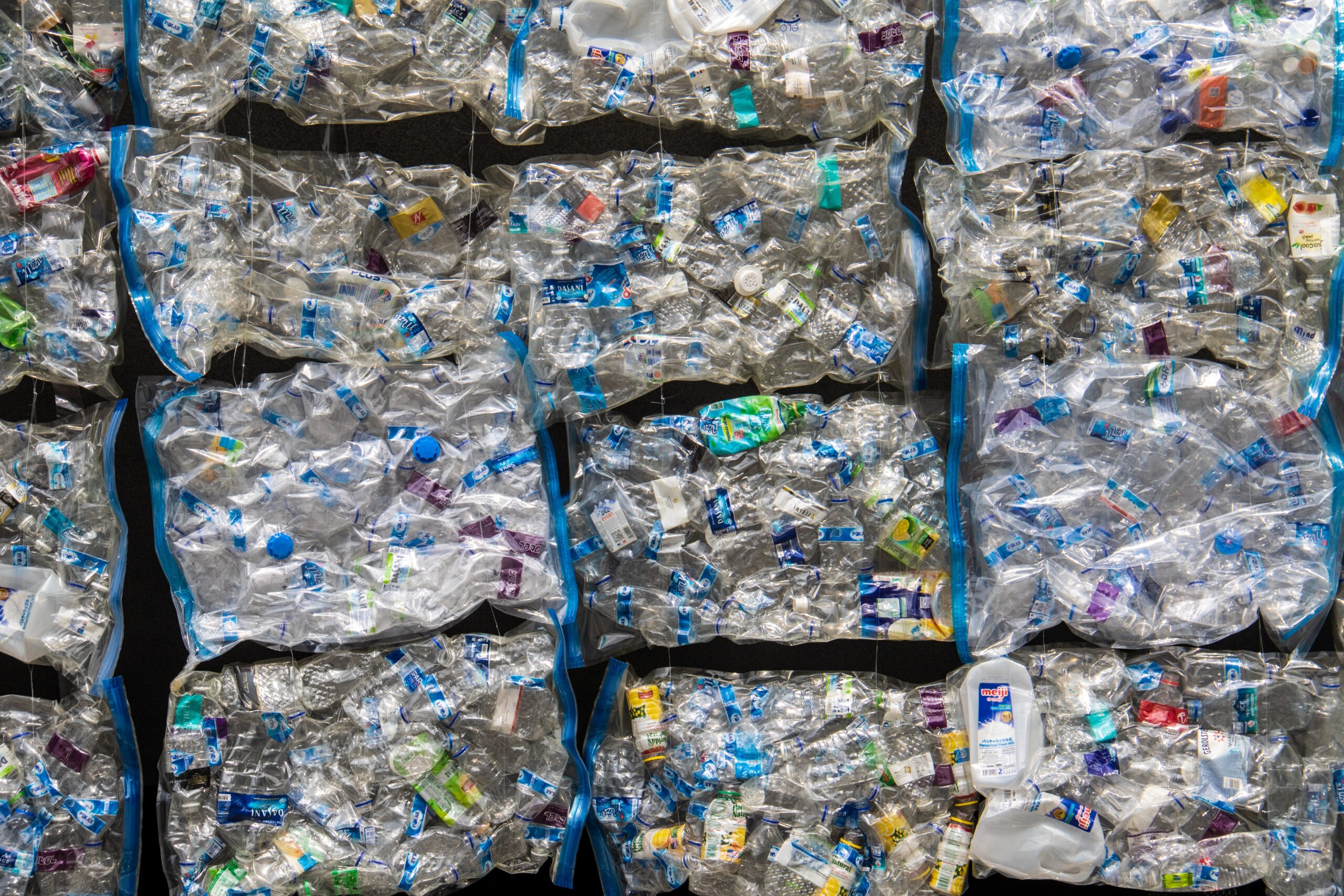
Separating your waste into items that can be recycled is essential for keeping the Cayman Islands as clean and green as possible. There’s some misinformation about what happens to our recycling, so here’s a top-level explanation of what happens after you drop your items in the recycling bin.
Aluminium cans
Once your cans have been collected, they are processed at the George Town recycling facility. They are first cleaned and sorted, then crushed into bales for shipping. Every 8 – 12 weeks, we ship containers full of crushed cans to the US for onward processing.
When the bales reach the recycling plant in the US, they are shredded into small pieces called “sows.” Using mechanical and chemical processes, the surfaces of the aluminium pieces are scrubbed clean, to prepare them for melting. The sows are then melted in a furnace. Aluminium alloys are created by adding metals like copper, zinc, magnesium or silicon to the molten mixture. Alloy formulas are chosen based on the planned uses for the reprocessed aluminium.
The molten metal is poured out and formed into ingots, which can be transported to aluminium processing or manufacturing plants to be made into new products such as more cans, aluminium cladding or auto parts.
The recycling process uses only 5% of the energy required to produce aluminium from raw materials, and it reduces the need for mining new bauxite ore – the naturally occurring mineral base of aluminium.
TIP: Crush your cans before dropping them into the recycling bins. This stops the recycling bins from overflowing and helps us to collect as many cans as possible.
Plastics
We collect two types of plastic for recycling in the Cayman Islands. Type one, including water and soda bottles, and type two, including milk jugs and shampoo bottles. Different types of plastic have different properties, and they need to be separated before they can be processed. If you look on the bottom of the bottle you will see the number. It’s usually inside the recycling symbol.
Plastic recycling is sorted and baled at the George Town recycling centre. It is sorted by hand with any obvious contaminants removed.
Once the plastic is sorted, it is baled for transportation to the US. When it reaches the reprocessor, it is cleaned and shredded into small pieces called plastic flakes. The plastic flakes are then heated, which melts them. They are then formed into small pellets. These pellets can then be used to make new plastic products, such as plastic bottles, containers, and other items.
Separating and recycling your plastic waste diverts it from landfill, which is crucial for the health of our Island, and the planet. Any plastics that are put into normal waste bins will end up in landfill, taking hundreds of years to break down.
Paper and cardboard recycling
Once the paper and cardboard is collected, it is sorted by type and grade. Different types of paper and cardboard have different recycling requirements and will be separated to be baled.
After sorting, the paper and cardboard is cleaned and processed to remove any contaminants, such as food residue or plastic.
A percentage of the newspaper and cardboard recycling is shredded and mulched with yard waste to make compost. The remaining materials are baled for shipping to recyclers in the US. Here, the materials are then chopped into small fibers and mixed with water to create a slurry. This slurry is then cleaned, screened and processed to remove any impurities, such as glue, and ink.
Finally, the fibres are dried and formed into new paper products, such as new newspapers, paperboard, and other paper products. The recycling of paper and cardboard conserves natural resources, reduces the need for logging, saves energy, and reduces the amount of waste sent to landfills.
Metal (including derelict vehicles)
Scrap metal, including vehicles, can be dropped off at the George Town Landfill. Derelict vehicles are also towed to the facility for processing. All metal is sorted by type, which includes ferrous (contains iron) and non-ferrous (does not contain iron) metals. Ferrous metals, such as steel and iron, are typically magnetic, which makes them easy to separate from non-ferrous metals, such as copper, aluminium, and brass.
The sorted scrap metal is then cleaned to remove any contaminants such as dirt, oil, or paint. After cleaning, the scrap metal is baled by type and stored until there is enough to ship to the US for onward processing.
Once the metal reaches its designated recycling plant, it is shredded or crushed into smaller pieces. These smaller pieces are then melted in a furnace where they are then poured into moulds to create new products such as rebar, wire or sheet metal.
Recycling scrap metal conserves natural resources and energy, reduces the need for mining new ore, and reduces the amount of waste sent to landfills. It also reduces greenhouse gas emissions associated with the production of new metal products.
Yard waste
Green yard waste can be taken to the George Town Landfill site where it will be ‘mulched’ with shredded paper and cardboard to make nutrient-rich compost. Alternatively, you can make your own compost at home.
The ReGen energy and waste
Once completed, the ReGen facility will not only turn the George Town landfill site into a remediated green space, but it will also see the construction of a new waste management facility. It is expected that the facility will have the capacity to divert up to 95% of waste from landfill by increasing the efficiency and capacity of recycling for the Cayman Islands. Any waste that can’t be recycled will be incinerated at the facility’s Energy from Waste plant. The heat created through this process will drive steam-powered turbines that generate electricity to power Caymanian homes.
So now you know what happens next. Hopefully our explanation will inspire you to recycle more.
